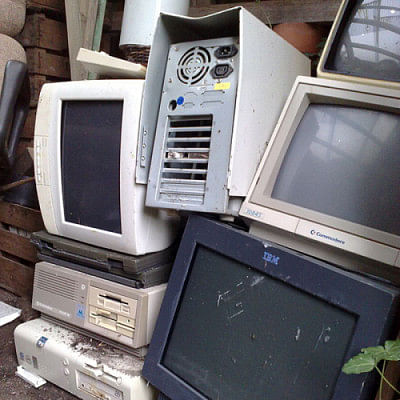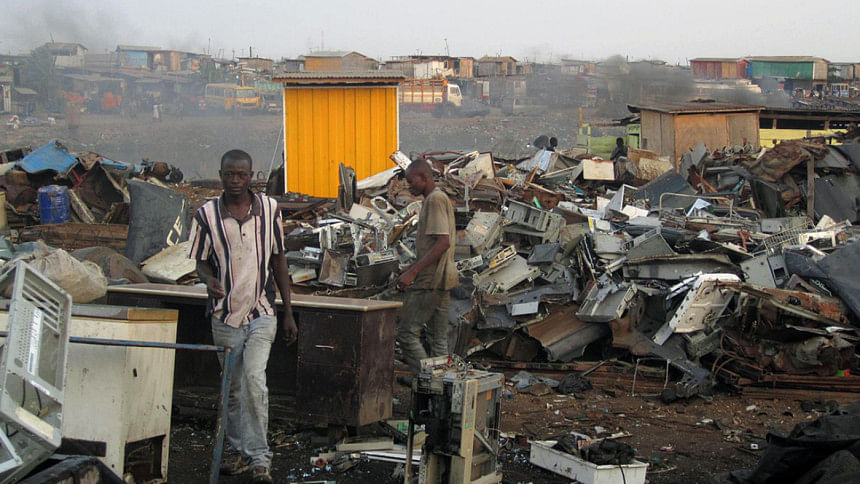White goods dominate e-waste items

Old kitchen, bathroom and laundry equipment made up 60% of the 41.8 million tonnes of electronic waste thrown away in 2014, suggests a report.
Written by researchers from UN University it details how much e-waste different regions discard.
Old microwaves, washing machines, dishwashers and other household items made up the bulk of the waste.
Only 16% of the items discarded found their way into proper recycling and re-use schemes.
Urban mine
The report found the US was the nation which disposed of most electronic waste with 7,072 kilotonnes generated in 2014. China was second (6,032 kilotonnes) and Japan third (2,200 kilotonnes).
European nations topped the rankings of regions measured by how much waste each citizen generated.
In Norway, each inhabitant did away with about 28.4kg of electronic waste, found the report. Across Africa levels of e-waste generated per inhabitant were lower at 1.7kg per person.

The report said rising levels of discarded electronic equipment were being driven by the growing popularity of domestic electronics and because many modern devices did not last as long as older versions of the same products.
Far more should be done to capture e-waste and "mine" the valuable resources used to make such equipment, said UN under-secretary-general David Malone, rector of the UN University.
"Worldwide, e-waste constitutes a valuable 'urban mine' - a large potential reservoir of recyclable materials," he said.
Buried within the 41.8 million tonnes of waste was more than 16,000 kilotonnes of iron, 1,900 kilotonnes of copper and 300 tonnes of gold as well as other precious metals such as palladium.
The combined value of all these valuable resources was about $52bn (£35bn) estimated the report.
In addition, said Malone, the massive amount of waste represented a potential toxic stockpile as many of the devices used materials, such as lead, that were hazardous which needed to be disposed of carefully.

 For all latest news, follow The Daily Star's Google News channel.
For all latest news, follow The Daily Star's Google News channel. 



Comments